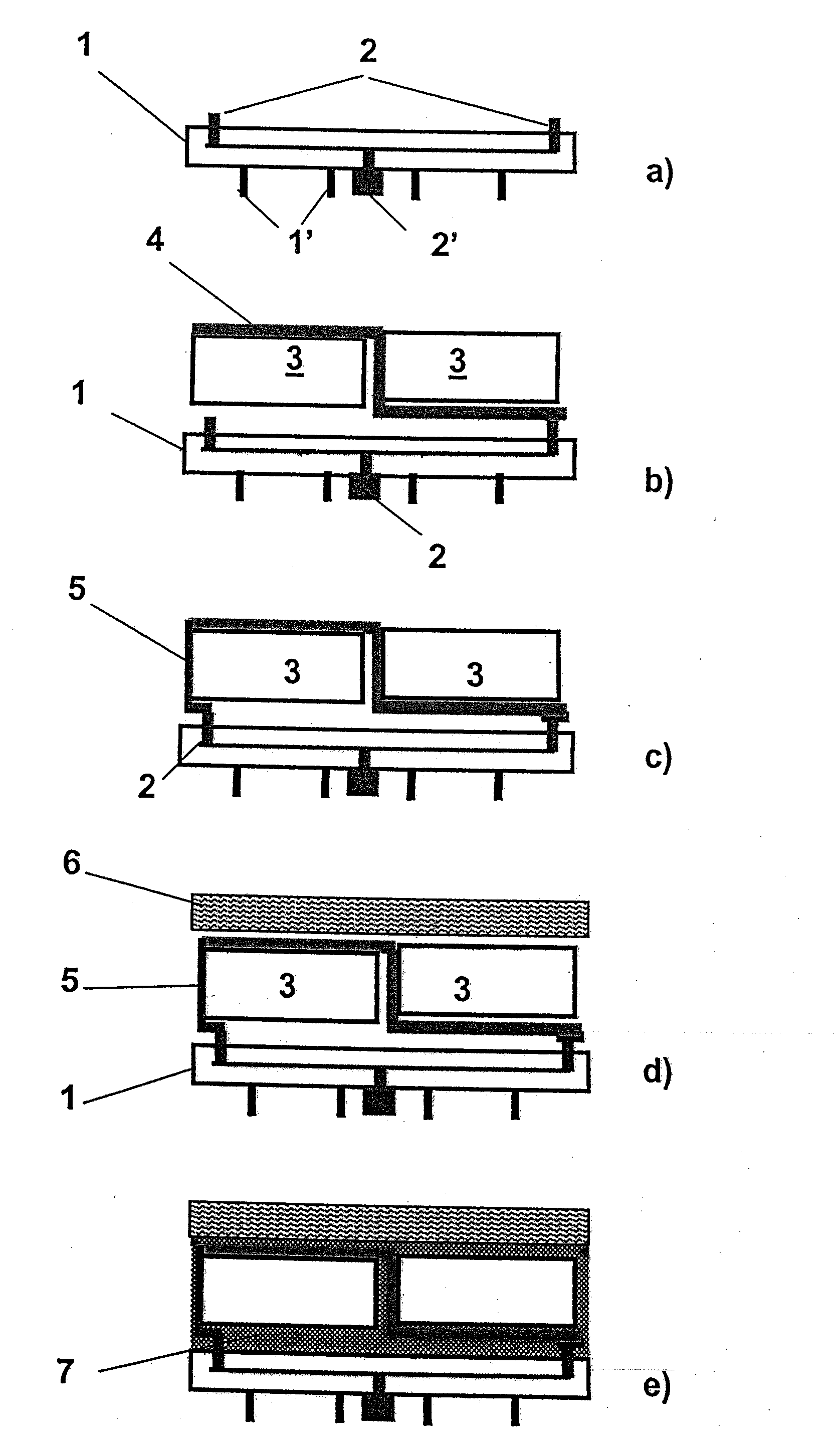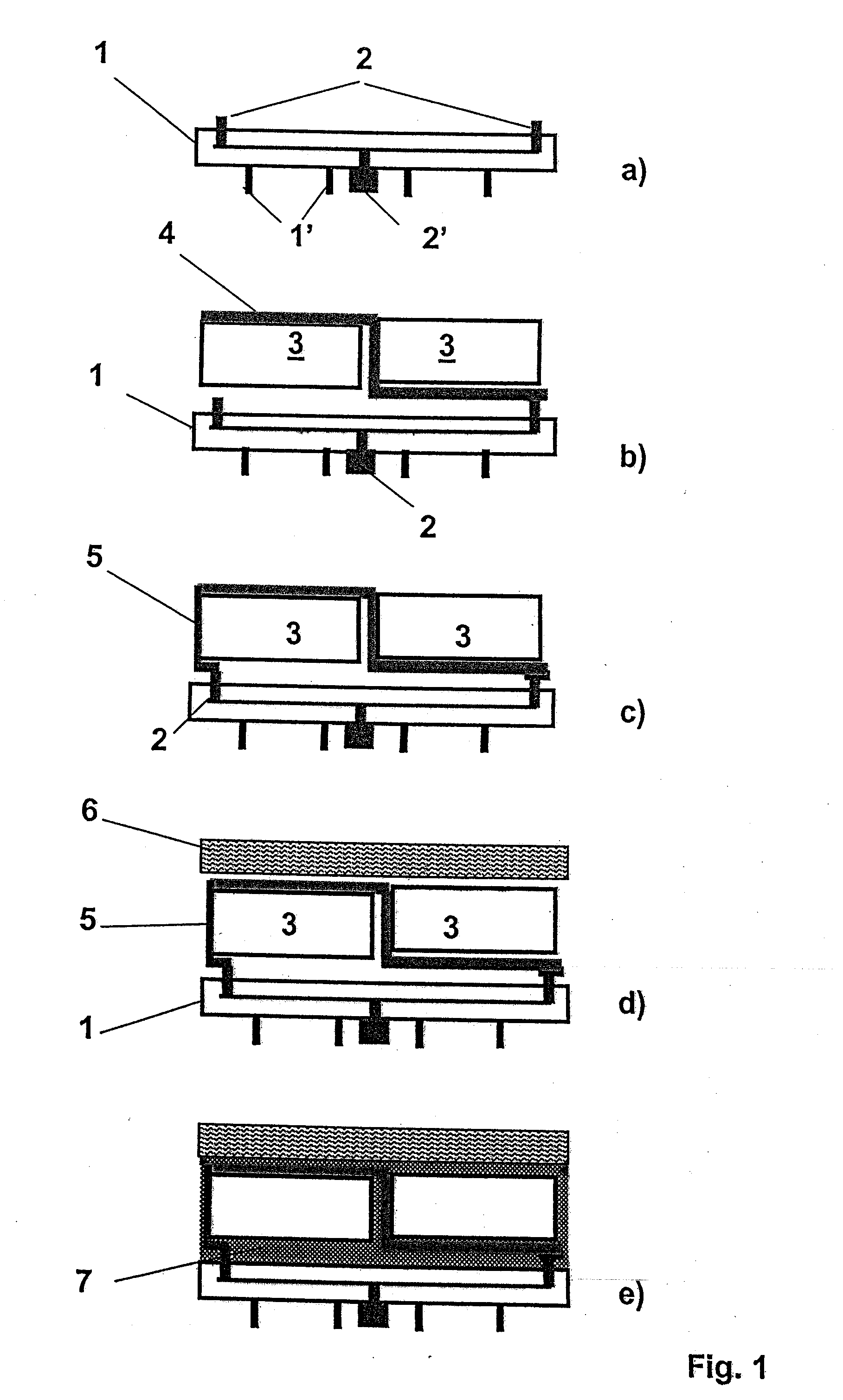Solar module
- Summary
- Abstract
- Description
- Claims
- Application Information
AI Technical Summary
Benefits of technology
Problems solved by technology
Method used
Image
Examples
Embodiment Construction
[0056]Manufacturing steps for the cost-effective production of a solar module are shown in FIGS. 1a through e.
[0057]A plastic carrier 1 is shown as a rear side construction in FIG. 1a, which is produced from a plastic material in the course of an injection molding or injection-compression molding method or in the course of a compression method. In addition, an electrical terminal structure 2 for the later electrical contacting of the solar cell configuration is provided within the plastic carrier 1. The electrical terminal structure 2 is advantageously implemented as stiff at least in the sections in which it is completely enveloped by the plastic material of the plastic carrier 1, for example, by profiling as rails. The plastic carrier experiences improved surface stiffness through the embedded electrical terminal structure 2. In addition, the plastic carrier 1 has ribbed struts 1′ on its rear side, which are used, on the one hand, for further stabilization and also for fastening ...
PUM
 Login to View More
Login to View More Abstract
Description
Claims
Application Information
 Login to View More
Login to View More - R&D
- Intellectual Property
- Life Sciences
- Materials
- Tech Scout
- Unparalleled Data Quality
- Higher Quality Content
- 60% Fewer Hallucinations
Browse by: Latest US Patents, China's latest patents, Technical Efficacy Thesaurus, Application Domain, Technology Topic, Popular Technical Reports.
© 2025 PatSnap. All rights reserved.Legal|Privacy policy|Modern Slavery Act Transparency Statement|Sitemap|About US| Contact US: help@patsnap.com


